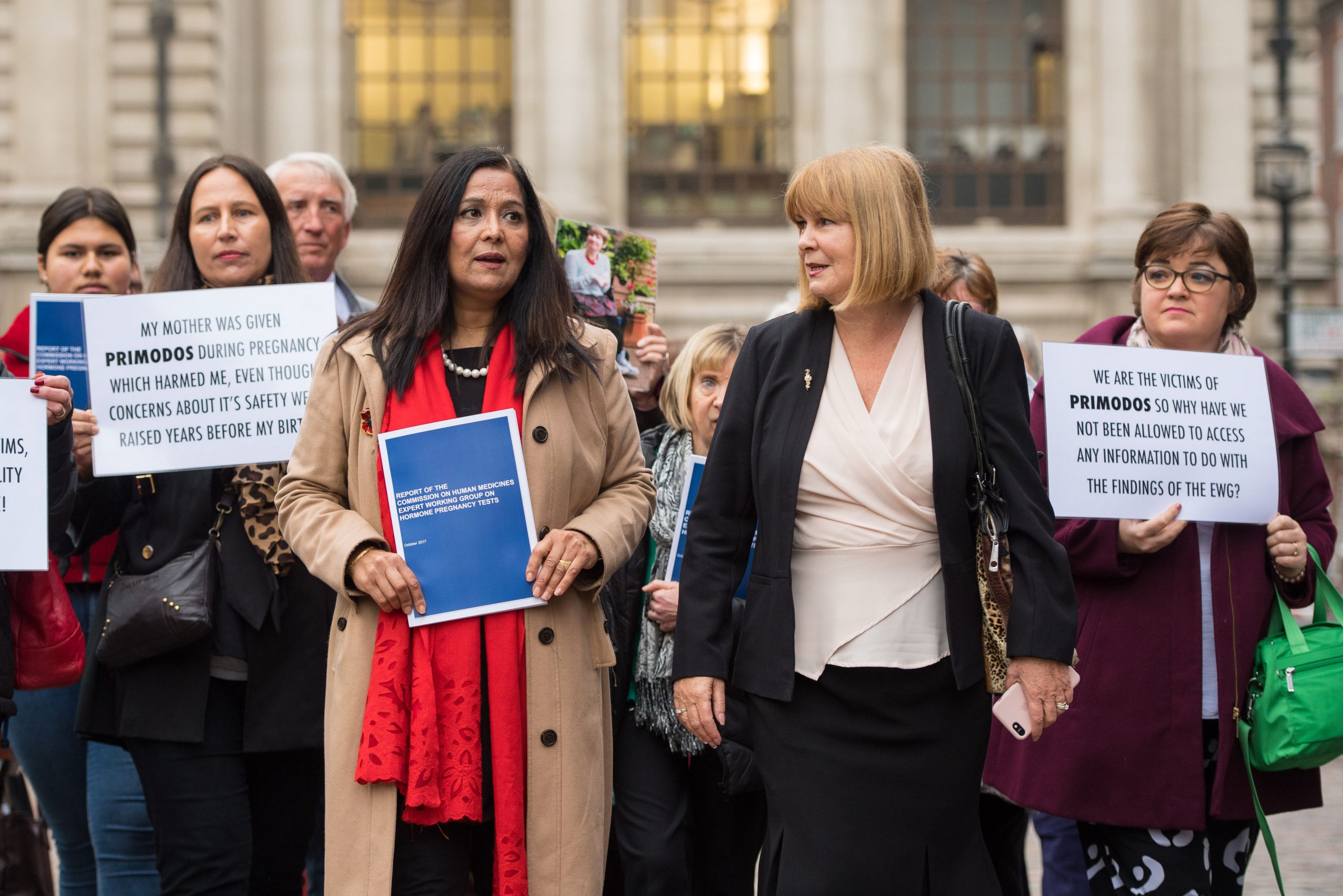Primodos scandal: What is Primodos and how did it affect babies?


First prescribed as a hormonal pregnancy test (HPT) in the late 1950s, Primodos was supposed to be a quicker and more reassuring alternative to the traditional laboratory pregnancy tests.
However as the years went by, doctors and campaigners began to warn medical bodies about Primodos and the effect it was having on newborn babies.
Today [July 8] marks victory for those campaigning against Primodos, as a new independent report has determined that the manufacturer of the pregnancy test and the government should pay out to families.
The Independent Medicines and Medical Devices Safety Review found that children suffered “avoidable harm” from government failure to regulate the drug used in the hormone pregnancy tests. Baroness Cumberlege, who led the review, said that both the state and the manufacturer have an “ethical responsibility” now to fund a financial scheme for “those harmed” by the drug, to help them with care costs.
As reported by Sky News, Marie Lyon, chair of the Association for Children Damaged by Hormone Pregnancy Tests, was speechless as she read the report. She said, “This has been what has been missing for so long. It’s the fact that it has been acknowledged, at last.
“They’ve actually looked at the documentation honestly and openly and that is the biggest result for our families – they will be overjoyed.”
The review also looked at two other treatment scandals: pelvic mesh implants, which were a surgical option to treat incontinence and prolapse that left women with agonising chronic pain, and sodium valprolate, which was an epilepsy drug that caused physical abnormalities to babies in the womb if taken during pregnancy.
Parenting advice, hot topics, best buys and family finance tips delivered straight to your inbox.
Campaigners and families have been asking for acknowledgement of the government’s role in these scandal for 40 years in the case of Primodos, but what was the hormonal pregnancy test, Primodos? And how did it affect babies?
What is Primodos?
Primodos was first prescribed in 1959, as a hormonal pregnancy test (HPT) that would induce a period if a woman wasn’t pregnant. If she was, it was thought that the body would simply absorb the hormones.
Many saw the test as a step forward in science from traditional laboratory tests, which the public knew little about at the time and were expensive.
Primodos contained the same hormones as the oral contraceptive pill, which wasn’t launched in the UK until three years later in 1961, but in a much higher concentration. One dose of Primodos was equal to 40 oral contraceptive pills.
The instructions given by Schering, the manufacturer who produced the test, was that a woman should take “1 tablet one each of two consecutive days. Bleeding following in 3-6 (rarely as long as ten) days, if there is no pregnancy. An existing pregnancy is unaffected by Primodos.”
Despite concerns being raised early on that administering drugs could “upset the delicate hormonal balance of the mother and the foetus”, the drug wasn’t taken off the market until 1978 – a full 20 years after it first started being used.
How did it affect babies?

Research around Primodos at the time suggested that there was a link between the drug and miscarriages, babies were born with shortened limbs, brain damage, heart defects and abnormalities with their internal organs.
The effects of the drug meant that many children died before reaching adulthood and those that did survive were often deaf, dumb and blind.
In 2017, Sky News reported the full story of “how documents were destroyed and information withheld about a drug that may have deformed and killed babies in the womb.”
The investigation also told the story of campaigner Marie Lyon, whose daughter was born without a fully formed arm. She said that she was given “two small round pill in a green packet and advised to take one. If she didn't have a period, she was to take a second 12 hours later.”
When her daughter was born, Marie said that it was immediately clear something was wrong as the nurses took her away immediately.
"When they brought her back, she was swaddled up to her neck in a blanket. They just said: 'Look, we're really sorry but we have to tell you that your daughter's arm didn't form from below the elbow.'
"When they did unwrap her, she was beautiful, but just where the elbow had been there was this perfect, tiny little palm with four little fingers and a thumb."
Marie became one of the leading campaigners for justice following this, asking the government to acknowledge their role in failing to regulate the drug.
A timeline of the primodos scandle
1959 – The drug is made available as a pregnancy test in the UK.
1967 - Dr Isabel Gal, who worked at Queen Mary’s Hospital for Children, wrote a letter to the science journal Nature that Primodos caused spina bifida in babies whose mothers had taken the test.
1968 – Only one year later, statistician Dr Dennis Cook showed that instances of birth malformations rose in line with the sale of Primodos.
1970 – Schering, the manufacturer, is asked by the Department of Health committee to remove pregnancy testing as one of the uses of the drug.
1975 – A warning label appeared on the back of the Primodos packets, saying that the drug could cause “congenital abnormalities”.
1977 – The regulator confirmed the link between HPTs and birth defects.
1978 – Primodos is taken off the market in the UK.
2014 – The Medicines and Healthcare Products Regulatory Agency concludes that evidence for negative effects of Primodos to be “inconclusive”.
2017 – A Sky News documentary revealed that papers had been discovered in the Berlin National Archives, showing that women who took a HPT were five times more likely to have a disabled child than those who didn’t take the drug.
The UK Commission on Human Medicines published a report in the same year that concluded evidence did not supporting a link between Primodos and malformations, miscarriage or stillbirths.
2018 – Dr Neil Vargesson from the Institute of Medical Sciences in Aberdeen University conducted an experiment on zebra fish embryos with Primodos. He found that the embryos suffered a range of deformities, including damage to their spines, fins, eyes and tails. The research also discovered that the earlier the foetus was exposed to the drug, the more damage would be done.
Later in the same year, Oxford University concluded a groundbreaking study that linked mothers who took Primodos to malformations in babies.
July 2020 – A report by The Independent Medicines and Medical Devices Safety Review finds that children suffered “avoidable harm” from government failure to regulate the drug used in the hormone pregnancy tests.
Matt Hancock told Sky News, “"I want to issue on behalf of the NHS and the whole healthcare system a full apology to those who've suffered and their families, for their frustration, for the time it's taken to get their voices heard."

Grace Walsh is a health and wellbeing writer, working across the subjects of family, relationships, and LGBT topics, as well as sleep and mental health. A digital journalist with over six years experience as a writer and editor for UK publications, Grace is currently Health Editor for womanandhome.com and has also worked with Cosmopolitan, Red, The i Paper, GoodtoKnow, and more. After graduating from the University of Warwick, she started her career writing about the complexities of sex and relationships, before combining personal hobbies with professional and writing about fitness.